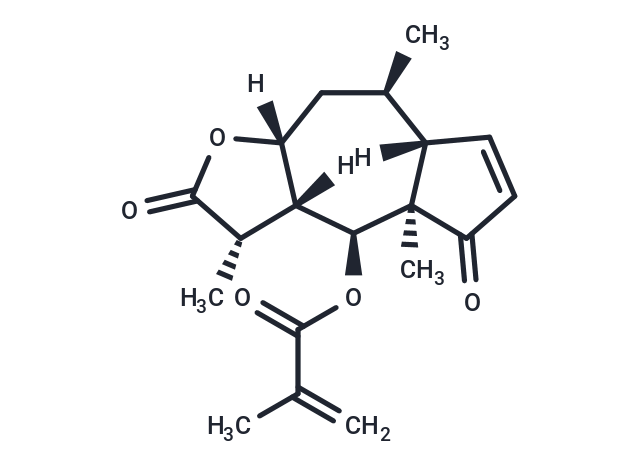Shopping Cart
- Remove All
 Your shopping cart is currently empty
Your shopping cart is currently empty

Arnicolide D is a sesquiterpene lactone. Arnicolide D isolates from Centipeda minima. Arnicolide D modulates the cell cycle, activates the caspase signaling pathway and inhibits the PI3K/AKT/mTOR and STAT3 signaling pathways. Arnicolide D inhibits Nasopharyngeal carcinoma (NPC) cell viability in a concentration- and time-dependent manner. Arnicolide D exerts strong cytotoxic activity on the human colon carcinoma HT-29 cell line.

| Pack Size | Price | Availability | Quantity |
|---|---|---|---|
| 1 mg | $155 | In Stock | |
| 5 mg | $473 | In Stock | |
| 10 mg | $679 | In Stock | |
| 25 mg | $987 | In Stock | |
| 50 mg | $1,380 | In Stock |
| Description | Arnicolide D is a sesquiterpene lactone. Arnicolide D isolates from Centipeda minima. Arnicolide D modulates the cell cycle, activates the caspase signaling pathway and inhibits the PI3K/AKT/mTOR and STAT3 signaling pathways. Arnicolide D inhibits Nasopharyngeal carcinoma (NPC) cell viability in a concentration- and time-dependent manner. Arnicolide D exerts strong cytotoxic activity on the human colon carcinoma HT-29 cell line. |
| In vitro | In this study, we found that two sesquiterpene lactones, isobutyroylplenolin and Arnicolide D, from Centipeda minima L. (Compositae) exerted stronger cytotoxic activity than cisplatin on the human colon carcinoma HT-29 cell line. Furthermore, the cytotoxicity of these two compounds on normal cells was weaker than that of cisplatin. |
| Molecular Weight | 332.39 |
| Formula | C19H24O5 |
| Cas No. | 34532-68-8 |
| Smiles | [H][C@@]12C[C@@H](C)[C@]3([H])C=CC(=O)[C@@]3(C)[C@@H](OC(=O)C(C)=C)[C@]1([H])[C@H](C)C(=O)O2 |
| Relative Density. | no data available |
| Storage | Powder: -20°C for 3 years | In solvent: -80°C for 1 year | Shipping with blue ice. | ||||||||||||||||||||
| Solubility Information | DMSO: 4.16 mg/mL (12.52 mM), Sonication is recommended. | ||||||||||||||||||||
Solution Preparation Table | |||||||||||||||||||||
DMSO
| |||||||||||||||||||||

Copyright © 2015-2025 TargetMol Chemicals Inc. All Rights Reserved.